-
 bitcoin
bitcoin $112195.049338 USD
2.42% -
 ethereum
ethereum $4124.915858 USD
2.81% -
 tether
tether $1.000570 USD
0.02% -
 xrp
xrp $2.861568 USD
2.25% -
 bnb
bnb $1000.346670 USD
3.04% -
 solana
solana $209.070819 USD
3.38% -
 usd-coin
usd-coin $0.999870 USD
0.02% -
 dogecoin
dogecoin $0.235379 USD
2.65% -
 tron
tron $0.335681 USD
-0.20% -
 cardano
cardano $0.803501 USD
3.38% -
 hyperliquid
hyperliquid $47.120881 USD
3.56% -
 chainlink
chainlink $21.501300 USD
3.44% -
 ethena-usde
ethena-usde $1.000571 USD
0.02% -
 avalanche
avalanche $29.793378 USD
3.62% -
 stellar
stellar $0.366964 USD
2.42%
What are DeFi's insurance protocols?
DeFi insurance protocols offer decentralized risk mitigation solutions tailored to the DeFi ecosystem, providing coverage against smart contract hacks, price volatility, and impermanent losses.
Feb 18, 2025 at 06:55 am
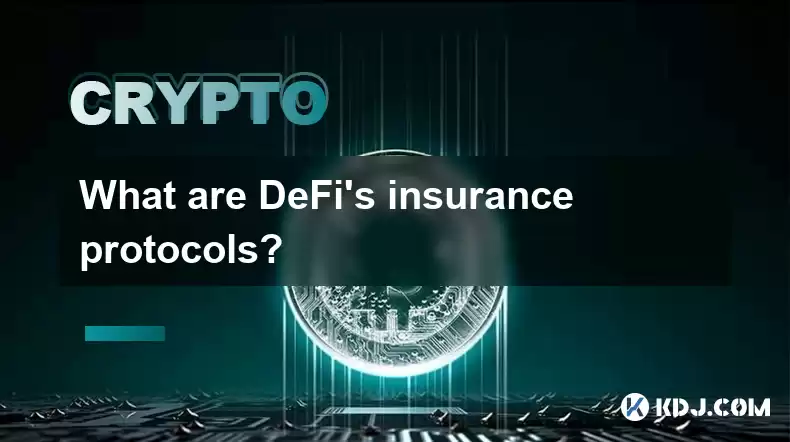
Key Points
- DeFi insurance protocols provide coverage for various risks inherent in the DeFi ecosystem.
- These protocols operate on smart contracts, offering a decentralized and automated approach to risk mitigation.
- Insurance coverage options include protection against smart contract hacks, price volatility, and impermanent losses.
- Choosing the right DeFi insurance protocol involves evaluating factors such as coverage terms, premiums, and reputation.
DeFi Insurance Protocols: A Comprehensive Guide
Understanding DeFi Insurance Protocols
DeFi insurance protocols are decentralized platforms that provide insurance coverage for risks associated with DeFi activities. Unlike traditional insurance companies, these protocols are built on blockchain technology, allowing for greater transparency, security, and efficiency. They offer a wide range of coverage options tailored to the specific needs of DeFi users, including protection against smart contract hacks, price volatility, and impermanent losses.
Advantages of DeFi Insurance Protocols
- Decentralization: DeFi insurance protocols are not controlled by any central authority, eliminating the risk of censorship or manipulation.
- Automation: Smart contracts automate the insurance claim process, ensuring swift and efficient payouts.
- Transparency: Blockchain technology provides full visibility into the terms and conditions of insurance policies.
- Customizability: DeFi insurance protocols allow users to tailor coverage options to their individual risk profiles.
- Affordability: Decentralization eliminates intermediaries, reducing operating costs and lowering premiums.
Choosing the Right DeFi Insurance Protocol
Selecting a suitable DeFi insurance protocol entails careful consideration of several factors:
- Coverage Terms: Review the specific risks and events covered under the insurance policy.
- Premiums: Compare the cost of premiums relative to the value of the coverage provided.
- Reputation: Assess the protocol's track record, customer satisfaction, and industry standing.
- Liquidity: Ensure the protocol has sufficient liquidity to meet claim obligations in a timely manner.
- Customer Support: Evaluate the responsiveness and quality of customer support provided by the protocol.
Top DeFi Insurance Protocols
- InsurAce: A decentralized insurance marketplace that offers coverage for various DeFi risks, including smart contract failures, theft, and hacks.
- Nexus Mutual: A member-owned insurance cooperative that provides coverage for smart contract bugs and hacks.
- Bridge Mutual: A multi-chain insurance platform that offers protection against bridge exploits and smart contract failures.
- Cover Protocol: A decentralized insurance protocol that focuses on providing coverage for price volatility in stablecoins and pegged assets.
- Yearn Finance: A yield optimizer that provides coverage for impermanent losses incurred in liquidity pools.
FAQs
Q: How do DeFi insurance protocols work?A: DeFi insurance protocols utilize smart contracts to automate the insurance claim process. Users purchase coverage by paying a premium. In the event of a covered event, such as a smart contract hack or price volatility, the user submits a claim and receives a payout based on the terms of their policy.
Q: Are DeFi insurance protocols safe and reliable?A: The reliability and security of DeFi insurance protocols vary depending on the specific protocol. It is essential to research the reputation, financial stability, and coverage terms of a protocol before purchasing insurance.
Q: What types of risks do DeFi insurance protocols cover?A: DeFi insurance protocols offer a wide range of coverage options, including protection against smart contract failures, theft, hacks, price volatility, impermanent losses, and bridge exploits.
Q: How can I find the right DeFi insurance protocol for me?A: Consider factors such as coverage terms, premiums, reputation, liquidity, and customer support when selecting a DeFi insurance protocol. Compare multiple protocols to find the one that best meets your risk profile and budget.
Q: What are the benefits of using DeFi insurance protocols?A: DeFi insurance protocols provide several benefits, including decentralized risk mitigation, automated claim processing, transparency, customizability, and affordability. They offer peace of mind to DeFi users by protecting their funds and assets against various risks.
Disclaimer:info@kdj.com
The information provided is not trading advice. kdj.com does not assume any responsibility for any investments made based on the information provided in this article. Cryptocurrencies are highly volatile and it is highly recommended that you invest with caution after thorough research!
If you believe that the content used on this website infringes your copyright, please contact us immediately (info@kdj.com) and we will delete it promptly.
- Citi's Token Services: Clearing the Path for 24/7 Global Payments
- 2025-09-30 04:45:16
- ADA, Mutuum Finance, and Cardano Pattern: Navigating Crypto Opportunities Like a New Yorker
- 2025-09-30 04:45:16
- Bitcoin, XRP, and 250x Gains: Is MAGACOIN FINANCE the Next Big Thing?
- 2025-09-30 04:50:01
- Heada, Shiba inu, and Blockddddddded Faucet: A Crypto Trifecta
- 2025-09-30 05:05:11
- Citi's Token Services and 24/7 USD Clearing: A New Era for Global Payments
- 2025-09-30 04:50:01
- Uniswap (UNI) Price Check: Navigating Channel Targets and Market Sentiment
- 2025-09-30 05:05:11
Related knowledge

How to track DeFi activity on a block explorer
Sep 04,2025 at 05:36pm
Bitcoin's Role in Decentralized Finance1. Bitcoin remains the cornerstone of the cryptocurrency ecosystem, serving as both a store of value and a benc...
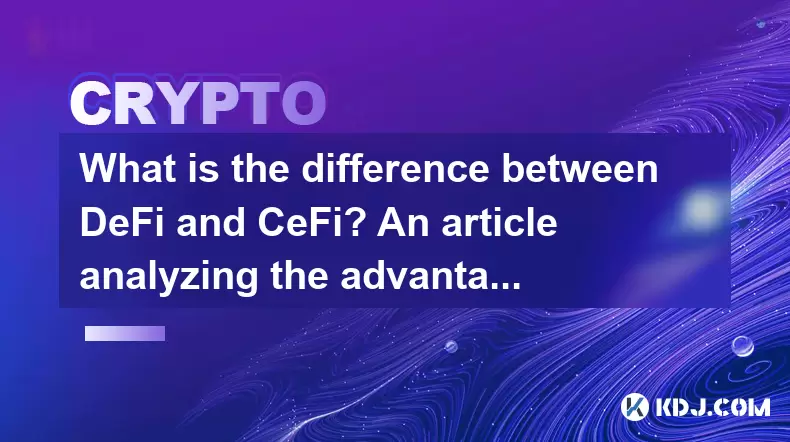
What is the difference between DeFi and CeFi? An article analyzing the advantages and disadvantages of both
Jun 13,2025 at 03:57am
Understanding the Foundations of DeFi and CeFiTo fully grasp the difference between DeFi (Decentralized Finance) and CeFi (Centralized Finance), it’s ...
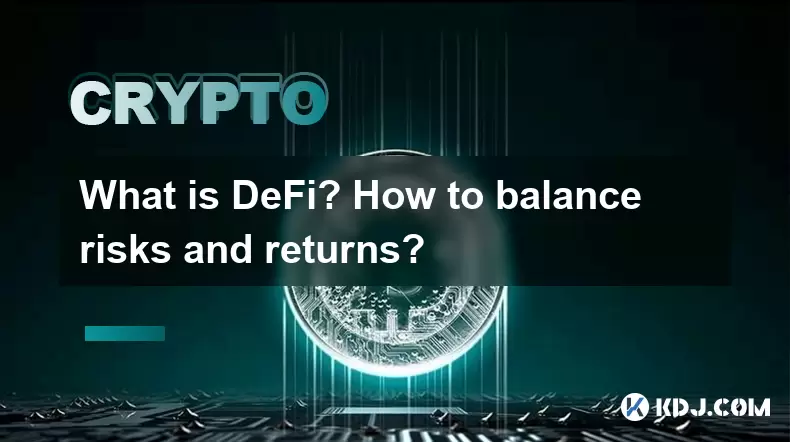
What is DeFi? How to balance risks and returns?
May 31,2025 at 12:22pm
What is DeFi? How to Balance Risks and Returns? Decentralized Finance, commonly known as DeFi, represents a revolutionary shift in the financial ecosy...
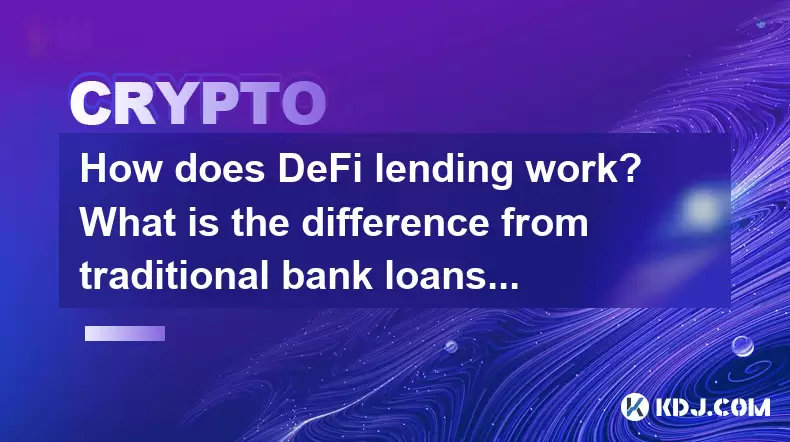
How does DeFi lending work? What is the difference from traditional bank loans?
May 29,2025 at 05:36pm
Introduction to DeFi LendingDeFi lending, or decentralized finance lending, represents a revolutionary shift in the way borrowing and lending are cond...
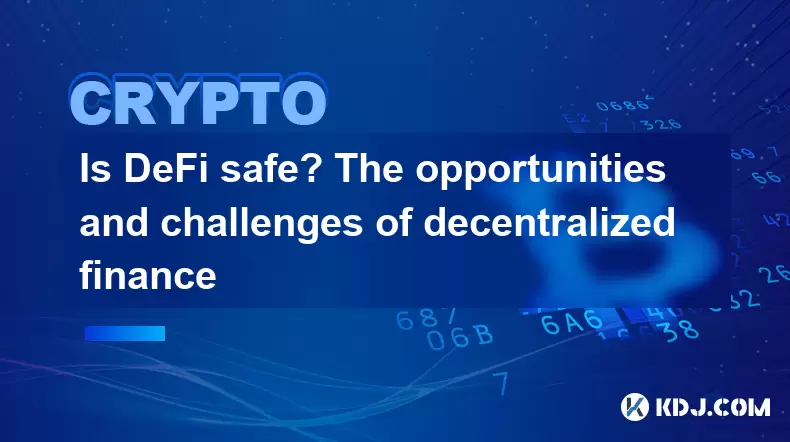
Is DeFi safe? The opportunities and challenges of decentralized finance
May 27,2025 at 02:28pm
Decentralized Finance, commonly known as DeFi, has revolutionized the financial landscape by offering a range of financial services without the need f...
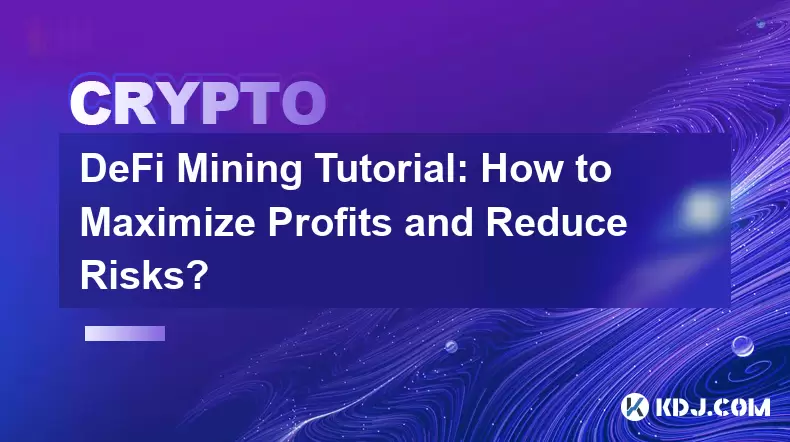
DeFi Mining Tutorial: How to Maximize Profits and Reduce Risks?
May 27,2025 at 07:42am
DeFi, or Decentralized Finance, has opened up a new world of opportunities for crypto enthusiasts looking to maximize their profits through various mi...

How to track DeFi activity on a block explorer
Sep 04,2025 at 05:36pm
Bitcoin's Role in Decentralized Finance1. Bitcoin remains the cornerstone of the cryptocurrency ecosystem, serving as both a store of value and a benc...

What is the difference between DeFi and CeFi? An article analyzing the advantages and disadvantages of both
Jun 13,2025 at 03:57am
Understanding the Foundations of DeFi and CeFiTo fully grasp the difference between DeFi (Decentralized Finance) and CeFi (Centralized Finance), it’s ...

What is DeFi? How to balance risks and returns?
May 31,2025 at 12:22pm
What is DeFi? How to Balance Risks and Returns? Decentralized Finance, commonly known as DeFi, represents a revolutionary shift in the financial ecosy...

How does DeFi lending work? What is the difference from traditional bank loans?
May 29,2025 at 05:36pm
Introduction to DeFi LendingDeFi lending, or decentralized finance lending, represents a revolutionary shift in the way borrowing and lending are cond...

Is DeFi safe? The opportunities and challenges of decentralized finance
May 27,2025 at 02:28pm
Decentralized Finance, commonly known as DeFi, has revolutionized the financial landscape by offering a range of financial services without the need f...

DeFi Mining Tutorial: How to Maximize Profits and Reduce Risks?
May 27,2025 at 07:42am
DeFi, or Decentralized Finance, has opened up a new world of opportunities for crypto enthusiasts looking to maximize their profits through various mi...
See all articles


























![[Pycoin] PI Coin -Shocking Listance of Pycoin?! 'Rebellion' This time ... Pay attention to #paikoin [Pycoin] PI Coin -Shocking Listance of Pycoin?! 'Rebellion' This time ... Pay attention to #paikoin](/uploads/2025/09/29/cryptocurrencies-news/videos/pycoin-pi-coin-shocking-listance-pycoin-rebellion-time-pay-attention-paikoin/68da82f23cec1_image_500_375.webp)















































